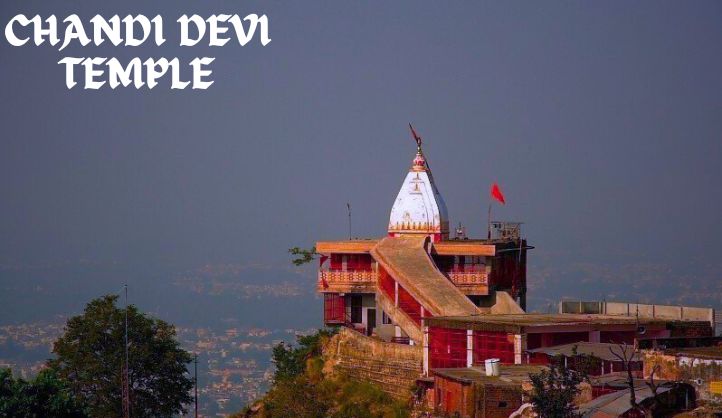Nestled in the serene foothills of the Himalayas, amidst the bustling city of Haridwar, lies a sanctuary of divinity and tranquility – the Chandi Devi Temple. This sacred abode, perched atop the Neel Parvat (Blue Mountain), stands as a testament to centuries-old traditions, spiritual fervor, and unwavering faith. As pilgrims ascend the steep slopes to seek blessings from the formidable Goddess Chandi, they embark on a journey that transcends the physical realm, delving deep into the realms of devotion and spirituality.
Historical Enigma
To truly appreciate the significance of Chandi Devi Temple, one must delve into its rich historical tapestry. Legend has it that the temple was built in the 8th century by the revered Adi Shankaracharya, a profound philosopher and theologian of ancient India. Adorned with intricate architecture and adorned with ornate sculptures, the temple stands as a tribute to the divine feminine energy embodied by Goddess Chandi.
The lore surrounding the temple is steeped in mythology and folklore. It is believed that Goddess Chandi manifested herself in Haridwar to annihilate the demon kings Shumbha and Nishumbha, who were wreaking havoc upon the celestial realms. With her valor and righteousness, she vanquished the forces of darkness, restoring peace and harmony to the universe. The temple, therefore, serves as a sacred site where devotees pay homage to the Goddess and seek her blessings for protection, courage, and victory over evil.
Spiritual Pilgrimage
For devout Hindus, a visit to Chandi Devi Temple is not merely a physical journey but a spiritual pilgrimage. The ascent to the temple is arduous, comprising a steep trek of approximately 3 kilometers from the base of the hill. Pilgrims, clad in vibrant attire and chanting hymns in praise of the Goddess, traverse the rugged terrain with unwavering determination and devotion. Along the way, they encounter picturesque vistas of the Ganges River meandering through the valley below, the verdant forests teeming with life, and the distant peaks of the Himalayas shrouded in mist.
As pilgrims reach the summit, they are greeted by the resplendent sight of the temple, its spires reaching towards the heavens in reverence to the divine. The atmosphere pulsates with the rhythm of prayer and devotion as devotees offer flowers, incense, and prayers at the sanctum sanctorum. The air resonates with the melodious strains of bhajans (devotional songs) and the reverberations of temple bells, invoking a sense of spiritual euphoria that transcends mortal realms.
How to reach
By Air
The nearest airport to Haridwar is Jolly Grant Airport in Dehradun, which is about 37 kilometers away. From the airport, you can hire a taxi or take a bus to Haridwar.
By Train
Haridwar Junction Railway Station is well-connected to cities. Several trains run daily to Haridwar.
By Road
Haridwar is well-connected by road. Regular bus services (both government and private) are available from Delhi, Dehradun, Rishikesh, and other nearby cities.
Sacred Rituals and Festivities
Throughout the year, Chandi Devi Temple plays host to a plethora of sacred rituals and festivities that attract pilgrims from far and wide. Navratri, the nine-day festival dedicated to the worship of Goddess Durga, holds special significance at the temple. Devotees throng the temple premises, participating in elaborate rituals, and offering fervent prayers to the Goddess in her various forms. The temple resonates with the sounds of dholak (drums) and cymbals, and the air is filled with the fragrance of incense and flowers, creating an ambiance of spiritual exuberance.
Another notable festival celebrated at Chandi Devi Temple is the Chandi Chaudas, which falls on the fourteenth day of the lunar fortnight. On this auspicious occasion, devotees observe a day-long fast and perform special rituals to invoke the blessings of the Goddess for protection against negative energies and malevolent forces.
Cultural and Architectural Marvels
Apart from its religious significance, Chandi Devi Temple is also revered for its architectural splendor and cultural heritage. The temple’s façade is adorned with intricate carvings depicting scenes from Hindu mythology, showcasing the exemplary craftsmanship of ancient artisans. The towering shikhara (spire) of the temple is a sight to behold, with its ornate embellishments and intricate detailing.
Inside the temple complex, visitors can explore various pavilions and shrines dedicated to different deities, each exuding an aura of divine grace and sanctity. The temple’s inner sanctum houses the idol of Goddess Chandi, bedecked in resplendent attire and adorned with precious jewels, radiating a divine presence that captivates the soul.
Preserving Tradition in a Modern World
In an era marked by rapid urbanization and technological advancement, Chandi Devi Temple stands as a bastion of tradition and spirituality. Despite the passage of centuries, the temple has remained a beacon of hope and solace for countless devotees, perpetuating age-old rituals and customs that have been passed down through generations.
However, the temple is not immune to the winds of change. In recent years, efforts have been made to modernize its infrastructure and amenities, ensuring a more comfortable and convenient experience for pilgrims. Yet, amidst these advancements, the essence of the Chandi Devi Temple remains unchanged – a sacred haven where devotees can connect with the divine and experience moments of transcendence.
Nearby Places to Explore
Mansa Devi Temple:
Located on the Bilwa Parvat, Mansa Devi Temple is another significant temple in Haridwar. Dedicated to Goddess Mansa Devi, believed to fulfill the wishes of her devotees, it offers a panoramic view of Haridwar. Like Chandi Devi Temple, Mansa Devi can be reached by a cable car or a trek.
Har Ki Pauri
One of the most famous ghats on the banks of the Ganges, Har Ki Pauri is the site where the evening Ganga Aarti is performed. The ritual involves chanting, lamps, and flowers, creating a mesmerizing and spiritual atmosphere. This ghat is considered the heart of Haridwar and is believed to be the spot where Lord Vishnu left his footprint.
Maya Devi Temple
Maya Devi Temple is an ancient temple dedicated to Goddess Maya, the Adhisthatri deity of Haridwar. It is one of the Shakti Peethas in India and is believed to be the place where the heart and navel of Goddess Sati fell.
Daksheswara Mahadev Temple:
Located in the town of Kankhal, this temple is dedicated to Lord Shiva. It is associated with the legend of Sati, Shiva’s consort, and her father King Daksha. The temple is known for its religious significance and tranquil surroundings.
Bharat Mata Mandir
This unique temple is dedicated to Mother India and features a map of India carved in marble. Each floor of the multi-story temple is dedicated to various deities, freedom fighters, and leaders of India, representing the country’s diverse culture and history.
Patanjali Yogpeeth
Patanjali was founded by Baba Ramdev, this institute is a center for yoga and Ayurveda. Visitors can explore the expansive campus, attend yoga sessions, and learn about traditional Indian medicine and wellness practices.
Chilla Wildlife Sanctuary
Part of the Rajaji National Park, this sanctuary is a great destination for wildlife enthusiasts. It is home to a variety of animals including elephants, tigers, leopards, and several species of birds. Safari rides are available for visitors to explore the park.
Conclusion
In the heart of Haridwar, amidst the hustle and bustle of everyday life, Chandi Devi Temple stands as a timeless symbol of devotion, faith, and spiritual enlightenment. As pilgrims embark on the journey to seek the blessings of Goddess Chandi, they embark on a voyage of self-discovery and introspection, transcending the boundaries of the material world to connect with the divine. In the hallowed precincts of the temple, amidst the echoes of ancient hymns and the fragrance of sacred incense, one can experience a profound sense of peace and serenity – a testament to the enduring power of faith and the eternal beauty of the human spirit.
FAQs about Chandi Devi Temple
What is the Chandi Devi Temple?
The Chandi Devi Temple is a renowned Hindu temple dedicated to Goddess Chandi, located atop the Neel Parvat in Haridwar, Uttarakhand, India. It is one of the most significant temples in Northern India and is revered for its historical and spiritual importance.
What is the significance of Chandi Devi Temple?
The temple is significant as it is dedicated to Goddess Chandi, who is believed to have vanquished the demon kings Shumbha and Nishumbha. It is a site of immense spiritual importance where devotees seek blessings for protection, courage, and victory over evil.
How can I reach Chandi Devi Temple?
A 3-kilometer trek from Chandighat can reach the temple. Alternatively, pilgrims can take a cable car (ropeway) ride, which offers a scenic and convenient way to reach the temple.
What are the temple timings?
The temple is generally open from 6:00 AM to 8:00 PM. However, timings may vary during festivals and special occasions, so it is advisable to check the current schedule before planning a visit.
What is the best time to visit Chandi Devi Temple?
The best time to visit is during the cooler months from October to March. The Navratri festival celebrated twice yearly (in spring and autumn), is an especially auspicious time to visit the temple.
Are there any special festivals celebrated at Chandi Devi Temple?
Yes, the temple celebrates several festivals, with Navratri being the most prominent. The temple is adorned with decorations during this nine-day festival, and special prayers and rituals are performed. Another important festival is Chandi Chaudas, observed on the fourteenth day of the lunar fortnight





